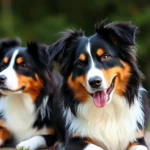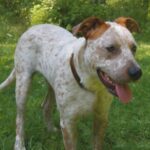
Understanding dog breeds is essential for any potential owner, as each breed comes with its own unique characteristics, requirements, and quirks. Among the many fascinating breeds, the Miniature Bulldog stands out as a charming and compact companion. This breed merges the robust features of larger bulldogs with a smaller, more manageable size, making them appealing to a variety of dog lovers. Recognizing the distinct traits of the Miniature Bulldog is crucial for anyone considering welcoming one into their home.
Understanding Dog Breeds
Definition of Dog Breeds
A dog breed is defined as a specific group of domesticated dogs that have been selectively bred for particular traits, behaviors, and physical characteristics. The diversity in dog breeds results from genetics and selective breeding practices, which have spanned thousands of years. These practices have led to the establishment of distinct breeds that vary significantly in size, appearance, temperament, and purpose.
Importance of Choosing the Right Breed
Choosing the right breed is vital for ensuring a harmonious relationship between the dog and its owner. Factors such as lifestyle, living environment, and activity level play a significant role in this decision. Understanding breed characteristics is essential, as they directly impact the ownership experience. For instance, some breeds require more exercise and mental stimulation, while others may be more laid-back and suitable for apartment living. The Miniature Bulldog, with its unique blend of personality traits and physical characteristics, is an excellent choice for various types of households.
Overview of the Miniature Bulldog
Origin and History
The Miniature Bulldog is a relatively new breed, developed in the late 20th century. This breed was created by crossing the English Bulldog with smaller breeds like the Pug and the Staffordshire Bull Terrier. The goal was to produce a dog that retained the bulldog’s distinctive features and temperament while being smaller in size. The Miniature Bulldog quickly gained popularity for its affectionate nature and adaptability, making it an ideal companion for families and individuals alike.
Physical Characteristics
The Miniature Bulldog typically weighs between 20 to 40 pounds and stands about 12 to 16 inches tall at the shoulder. Their compact build includes a broad, muscular body with a short, square snout and pronounced cheekbones. Coat types can vary, but they usually have a short, smooth coat that comes in various colors including brindle, fawn, and white. One of the breed’s most recognizable features is its loose, wrinkled skin, particularly around the face, giving it an endearing and expressive appearance.
Temperament and Personality
The Miniature Bulldog is known for its friendly and affectionate temperament. These dogs are generally good with children and can be quite playful, making them excellent family pets. They tend to be social and enjoy the company of their humans, often forming strong bonds with their owners. While they can exhibit a stubborn streak, which is common in bulldogs, early training and socialization can help mitigate this. Their calm demeanor also allows them to coexist well with other pets, although they may exhibit some territorial behavior.
Health Considerations
Common Health Issues
Like many breeds, the Miniature Bulldog is prone to specific health concerns. Some of the most common issues include:
- Respiratory problems: Due to their brachycephalic (short-nosed) structure, Miniature Bulldogs may experience breathing difficulties, particularly in hot or humid conditions.
- Hip dysplasia: This genetic condition can affect their mobility and overall quality of life.
- Skin issues: Their loose skin can lead to infections and irritations if not properly cared for.
Regular veterinary check-ups and a proactive approach to health care can help mitigate these concerns.
Lifespan and Aging
The average lifespan of a Miniature Bulldog ranges from 10 to 14 years. As they age, it’s essential to monitor their health closely, especially regarding joint issues and respiratory function. Maintaining a healthy weight through proper diet and exercise is crucial in ensuring a long, healthy life for these dogs.
Care and Maintenance
Diet and Nutrition
A well-balanced diet is vital for the health of a Miniature Bulldog. Recommended dietary needs include high-quality dog food that meets their nutritional requirements. Look for kibble formulated for small to medium breeds, ensuring it contains appropriate levels of protein, fats, and carbohydrates. Feeding schedules should consist of two meals per day, with portion control to prevent obesity, which can exacerbate existing health issues.
Exercise Requirements
Despite their compact size, Miniature Bulldogs require regular exercise to maintain a healthy lifestyle. Daily walks, playtime, and mental stimulation are essential to keep them engaged and prevent boredom. Activities like fetch and short agility courses can be particularly enjoyable for these dogs. However, care should be taken not to overexert them, especially during hot weather.
Grooming Needs
Grooming a Miniature Bulldog is relatively straightforward due to their short coat. Weekly brushing can help minimize shedding and keep their skin healthy. Regular checks for skin irritations, particularly in the folds around their face, are important. Bathing should be done as needed, using a gentle dog shampoo to avoid skin irritation.
Training the Miniature Bulldog
Basic Training Techniques
Training is an essential aspect of raising a well-behaved Miniature Bulldog. Early socialization and obedience training can help prevent behavioral issues down the line. Positive reinforcement methods, such as treats and praise, are highly effective with this breed. Consistency is key; establishing a routine will help them understand what is expected.
Common Behavioral Challenges
Miniature Bulldogs can face typical behavioral challenges, such as stubbornness and separation anxiety. Addressing these issues early on through training and consistency can help. Providing toys and engaging activities can also assist in alleviating boredom, which may lead to destructive behavior.
Finding a Miniature Bulldog
Reputable Breeders
When looking to add a Miniature Bulldog to your family, it’s essential to find a reputable breeder. Responsible breeders prioritize the health and well-being of their dogs, employing ethical breeding practices. Look for breeders who are transparent about health testing and provide a welcoming environment for their puppies. Questions to ask include:
- What health screenings have the parents undergone?
- Can you provide references from previous buyers?
- What socialization practices do you implement for the puppies?
Adoption Options
Adopting a Miniature Bulldog from a shelter or rescue can be a rewarding experience. Many dogs in these facilities are in need of loving homes, and adoption can be a fulfilling way to contribute to their well-being. When considering adoption, inquire about the dog’s background, health status, and any behavioral challenges they may have. The benefits of adopting over buying include giving a deserving dog a second chance and often lower costs associated with adoption fees compared to purchasing from a breeder.
Conclusion
The Miniature Bulldog is a unique breed that combines charm, loyalty, and adaptability. Understanding their characteristics, from health considerations to grooming needs, is essential for potential owners. This affectionate breed can fit into various lifestyles, making them suitable for families, singles, and seniors alike. Before bringing a Miniature Bulldog into your home, it’s vital to assess your lifestyle and ensure you can meet their needs. With proper care and training, a Miniature Bulldog can be a wonderful addition to any family.









